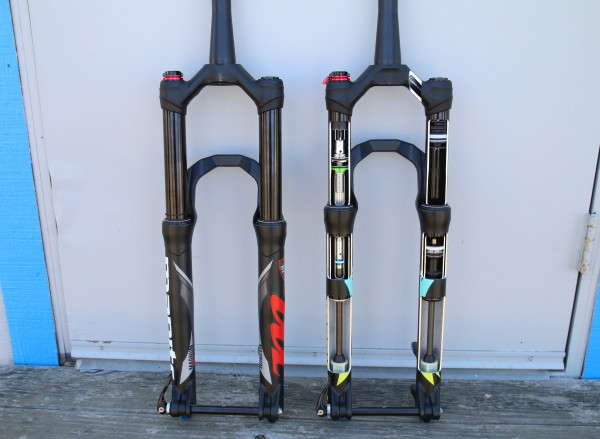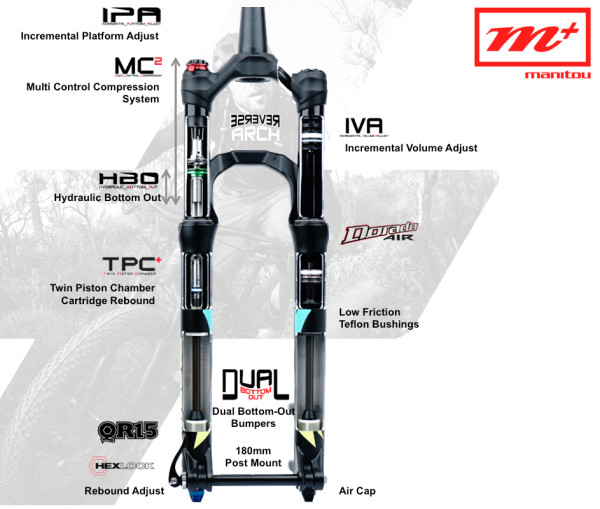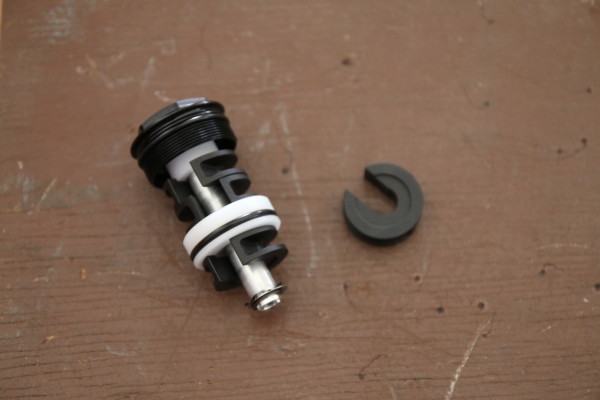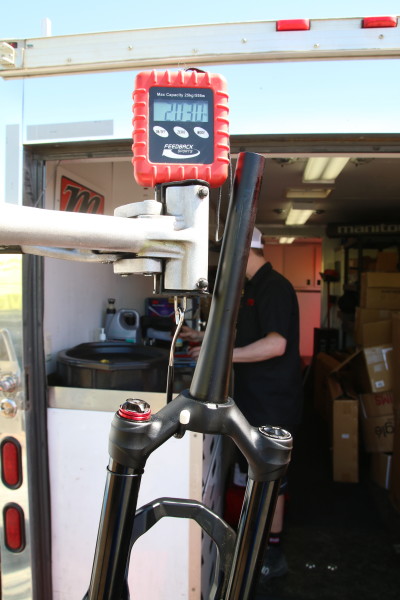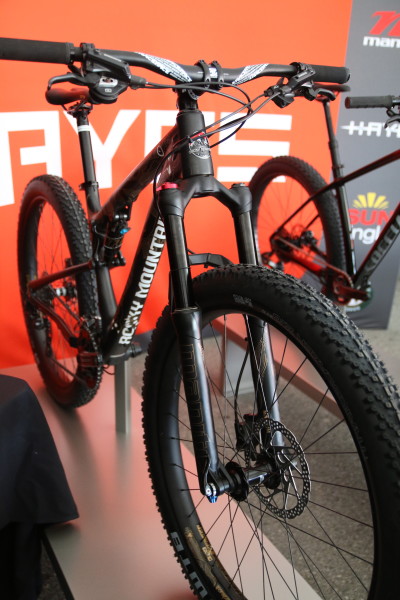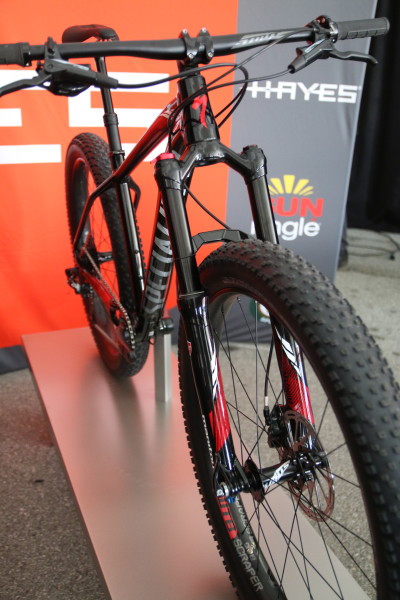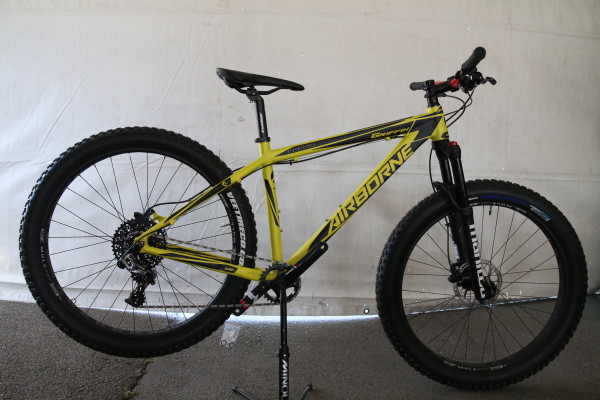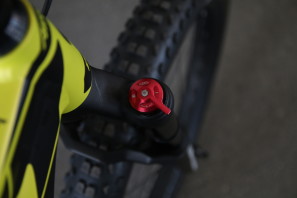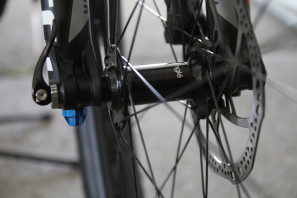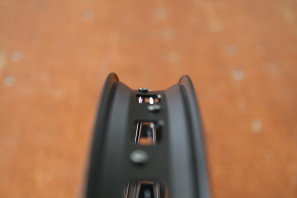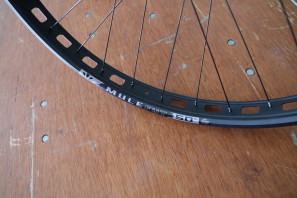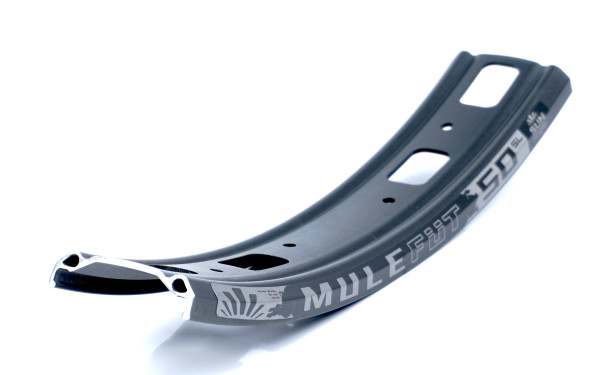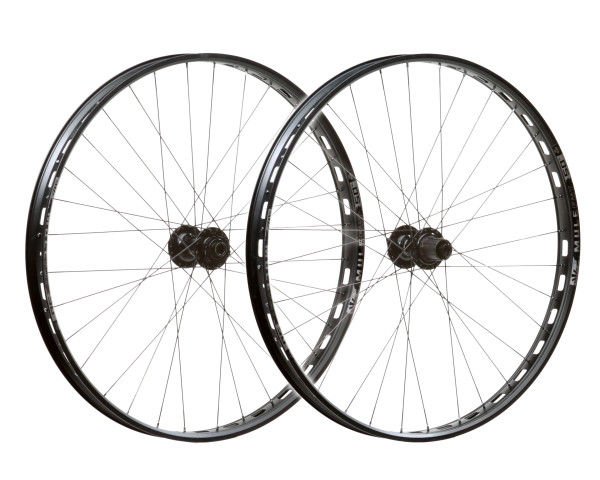It may seem like plus size bikes are just now springing up overnight, but for the new Manitou Magnum the project has been in the works for the past 18 months. Billed as the first purpose built suspension fork for plus size tires, Manitou wanted to be sure that the end product performed just as well if not better than any of their other options. In order to prove that bigger is indeed better, Manitou designed the fork from the ground up, rather than just stretching a 29er fork to fit.
At this point the inclusion of Boost sizing for the axle spacing should come as no surprise and as expected the Magnum touts all of the benefits we’ve heard to this point. Wider spacing results in wider hub flanges and improved spoke bracing angles for a stronger and stiffer front wheel. The added room also boosts tire clearance allowing for a 3.4″ tire in both a dedicated 27.5 and 29″ chassis. Unlike the Rockshox Bluto which started with 32mm stanchions, the Magnum goes with 34mm tubes hinting towards the aggressive nature of the fork.
Plus sized wheels and tires have been gaining momentum, but now with a proper suspension fork we expect them to really gain some traction…
Once you get past all the bad jokes about tube sizes and girth, the fact remains that the plus size category has been growing for quite some time but without a dedicated suspension fork. The Bluto and even some RS-1s have been used in many cases, but as far as a fork that was purpose built for plus size tires the Magnum is a first. Sold in both 27.5 and 29″ chassis, each fork uses a specific offset with 48 and 51mm respectively.
Substantially different than the original Manitou fork by the same name, the Magnum Comp and Pro forks are stuffed with all of their latest technologies. On the outside the reverse arch lowers and new 15x110mm Hemlock QR15 axle provide the stiffness for the bottom end while the hollow crown, tapered steerer, and 34mm tapered 7050 aluminum stanchions stiffen up the rest. Bigger wheels need bigger brakes so the fork is built with 180mm post mounts.
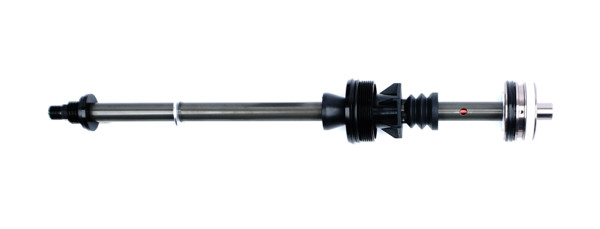
Starting with the air spring, the Magnum borrows from the Dorado but with an air volume optimized for the plus sized tires. One of the biggest challenges to designing a fork for plus sized tires is the fact that the input forces from impacts are lessened by the high volume tires. That’s a good thing for the rider, but it makes the suspension slow to react. Through tuning of the Dorado air cartridge which uses a single valve to fill both the positive and negative air chambers, the fork offers a balanced spring which makes it really responsive off the top.
Other challenges are faced with the additional unsprung weight of the bigger wheels and tires which can make damping the stroke of the fork difficult. Manitou approached the issue with D.O.S. or dynamic overstroke which prevents the extra mass from causing the fork to top out excessively or dwell at full compression by actually allowing the lowers to compress into negative travel and then settle back to the original position. 
Rebound and compression damping makes use of the MC² damper with HBO which is extremely adjustable. Packed with IPA platform adjust, high and low speed compression adjust and TPC rebound damping, the entire system is modified to work with the bigger wheels and tires. Inside the damping cartridge, the oil is under pressure at all times and it is pushed through the system rather than pulled. According to Manitou that prevents the oil from cavitating which is responsible for the break down in damping performance thanks to the air bubbles in the fluid. Additionally, the move to a 15mm rebound cartridge results in a 100g weight savings. The compression cartridge is kept the same size so that the larger volume of oil is less susceptible to changes from environmental factors.
The Magnum also pulls the Hydraulic Bottom Out feature from the Dorado which offers 6 positions of externally adjustable bottom out resistance. Physical bottom out bumpers on both sides of the fork are added protection against huge hits in the last 5-7mm of travel.
On the air side, the fork’s air volume can be adjusted with the Incremental Volume Adjust cap. Instead of using caps that thread together like the RockShox Bottomless Tokens, the IVA uses a piston mounted to a short rod that can be moved up or down by rearranging the spacers. Moving the piston up or down changes the position of the o-ring and increased of decreases the air volume of the fork.
On our scale this 27.5″ Magnum Pro with all the travel spacers installed came in at 2,030g.
As an aftermarket product, the Magnum will only be offered in the $900 Magnum Pro. However you will be seeing a lot of the OEM only Magnum Comp on bikes like the Specialized Fuse, Rocky Mountain Sherpa, Trek Stache, Airborne Griffin, and many of the other plus sized bikes on the way. The Comp model lowers the price with an ISO air spring, and ABS+ and TPC damping.
If you want to go Plus, you’ll need new wheels to do it so Manitou’s sibling Sun Ringle has stepped up with new hubs, rims, and complete wheelsets. After adding 15×110 and 12×148 Boost compatible hubs to the SRC line, Sun Ringle will have an option for nearly every modern axle width. The Boost hubs combine a redesigned flange geometry with an oversized rear axle to build a hub that will contribute to a super stiff wheel build.
Inside, sealed cartridge bearings are meant to withstand sloppy conditions and a special winter weight free hub body lube is added to keep the 3 pawl springs (1o degrees of engagement) from seizing up in the cold. The six bolt hubs are listed at 515g per pair and retail for $75 and $135 front and rear and in Shimano or XD free hub bodies. With the exception of complete wheels, all of the new product is in stock and ready to ship.
You’ve seen the MuleFut 80, now Sun Ringle is adding the MuleFut 50 SL. The pinned, 6061 aluminum rim is a single wall extrusion but adds box section reinforcements at the sidewall for stiffness. Measuring 44.4mm internal, 50m external, and 13.8mm tall, the 50 SL rims are tubeless compatible with the STR system (Sun Ringle Tubeless Ready). Designed with the same bead humps in the fat bike rim, the plus rim is optimized for tubeless use at low pressures and is actually ETRTO tubeless compliant. The STR kit will include a nylon inner rim strip, tubeless tape, valves, and eventually their own sealant for a complete tubeless system.
Sold in 27.5 or 29″ diameters, the MuleFut 50 SL rims will also be a part of the complete wheels with matching SRC hubs. Laced 3x with 32 WheelSmith DB spokes and brass nipples per wheel, weights are given at 1090/1210g for the 29″ and 1050/1170g for 27.5. Front wheels will be priced at $204, rear wheels at $360, and individual rims will sell for $140.
